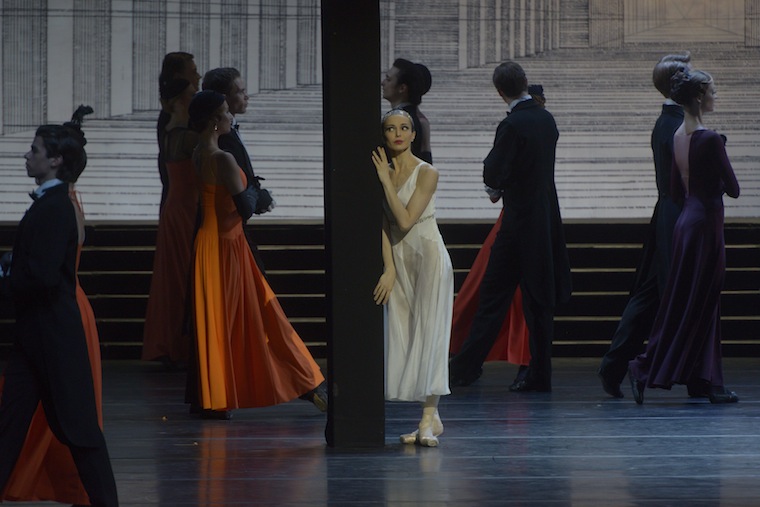
My hat’s off to Cal Performances. The Mariinsky Ballet returned to Berkeley’s Zellerbach Hall this past weekend, performing the West Coast premiere of Alexei Ratmansky’s Cinderella. From the opening chords of Prokovief’s score, it was clear that the audience would be treated to fabulous music. The over 60-member orchestra under the baton of Maestro Gavriel Heine produced a sound that was full, rich and emotionally generous.
There is a problem with storybook ballets: how does one make them appeal to a contemporary audience, disenchanted as it often is from the oddly mythic desires of fairy tales? As adults we too often are disappointed by the sheer labor of life. The fairy tale appeals to the childhood side of ourselves, the one that longs for the best and most wondrous, for the self to be crowned as the favored child.
The other difficult question posed by a ballet titled Cinderella is: how can a fairy tale glamorized by a denizen of the courts of the Sun King be revised and revolutionized by a Russian choreographer who was just coming into adulthood when the Soviet Union was dissolved?
Satire is predictable, but Ratmansky’s 2002 version takes on a light-heartedness that is often unavailable to satire. The red-haired harridan of a stepmother danced brilliantly by Anastasia Petushkova – and let’s face it, those wicked witch parts are the most fun to dance – was encumbered by two daffy and more awkward than bad-tempered daughters, Khudishka (Skinny) and Kubishka (Chunky), danced charmingly by Margarita Frovola and Yekaterina Ivannikova. A brief appearance of Dad (Andrey Yakovlev) shows him as ineffectual and drunk. The Fairy Godmother (Elena Bazhenova) is a sometimes feeble, other times spry bag lady.
At times the humor seemed to pander to the audience’s own sense of superiority, especially in the ballroom scenes, where the aristocracy disguised as the haute bourgeoisie went through its paces, heads and butts high, legs stiff, mouths prim. Most of the courtly gestures of the story were effaced; traditional European characters swapped out for characters from a story by, say, Kharms or Bulgakov.
The story frequently spun into directions that were truly its own though. Time loomed large in the ballet. Taking the form not only of a huge clock but also appearing in the Four Seasons, the guardian emanations of the Fairy Tramp. Their faces painted in bright green, red, orange and blue.
What is left to contemplate are Cinderella and her Prince. Principal Diana Vishneva was the opening night Cinderella. And she is a ballerina without peer. She was ably partnered by Konstantin Zverev, who besides being a terrific dancer has a fine comic sense, taking center stage in the ballroom with an assurance that was both amusing and appealing.
Ratmansky’s talent as a choreographer was most apparent in the pas de deux of these two dancers. They were showcases for Vishneva’s extravagantly lyrical arms. Nothing was exceptionally flashy: there were no moments in which you could see the dancers mentally prepare for an excruciatingly dangerous catch. Rather, it was continuously musical – a passage of melting sensuality, which was utterly demanding in timing and strength. The first of the two pas was marked by emotional subtlety, in which Cinderella approached the Prince with restraint and a fleet modesty that gradually transformed into a delicately realized surrender.
Dancers from the large Russian companies begin their training at an early age and the training is so thorough that the dancers have a quality of effortlessness that is very special and impossible to imitate. Their struggle is more often to break the bonds of the traditional choreography that they are most often identified with. Nonetheless, they are a joy to watch. Incomparable in their technique and grace.
– Jaime Robles
Photo: The Mariinsky Ballet and Orchestra presented Alexei Ratmansky’s Cinderella at Zellerbach Hall. Photo by Vladimir Baranovsky.
